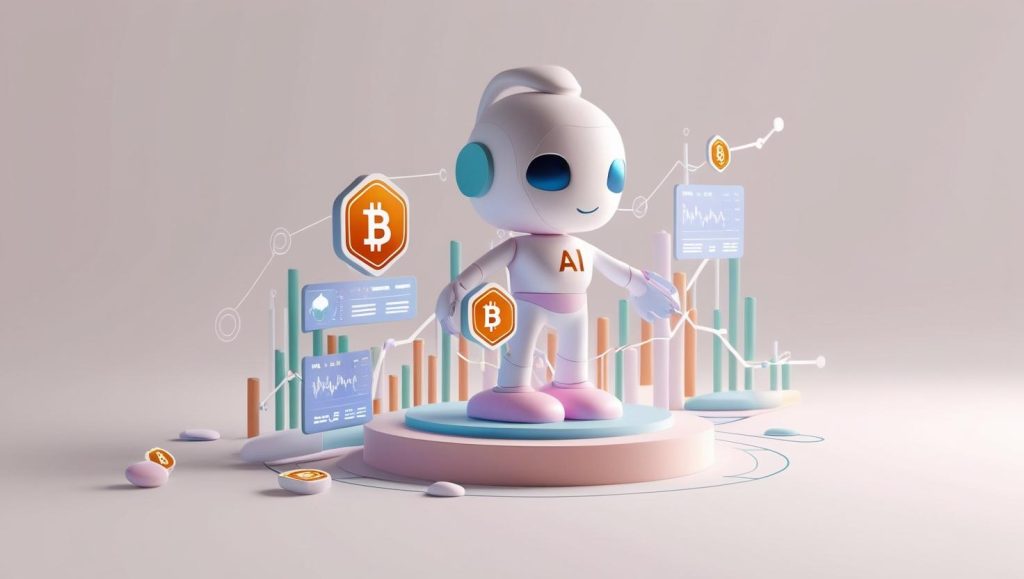1. Introduction
The financial industry is one of the most dynamic and rapidly evolving sectors in the world. With the rise of blockchain technology and artificial intelligence (AI), financial services are undergoing a transformative change. Blockchain, known for its secure, decentralized nature, and AI, recognized for its ability to process large amounts of data and generate insights, have the potential to revolutionize how financial institutions operate.
The combination of AI and blockchain is not just a fusion of two powerful technologies but also a catalyst for creating innovative applications that can address longstanding challenges in the financial sector. This synergy can enhance efficiency, reduce costs, improve security, and offer more personalized financial services. By merging AI’s data analytics capabilities with blockchain’s transparency and immutability, the financial industry can achieve significant breakthroughs in areas such as fraud prevention, customer experience, automated trading, and regulatory compliance.
In this article, we will explore how the combination of artificial intelligence and blockchain is reshaping the financial industry and driving the next wave of innovation.
2. Enhancing Fraud Prevention and Security
Fraud is a significant issue in the financial industry, and both AI and blockchain have individual strengths in combating it. When combined, they can form a powerful security framework that enhances the overall protection of transactions and sensitive data.
1. AI for Fraud Detection
AI, particularly machine learning (ML), is widely used to detect fraud in financial transactions. Machine learning algorithms can analyze large datasets and identify patterns that suggest fraudulent activity. These systems can learn from historical fraud data and continuously improve their detection capabilities.
- Real-Time Fraud Detection: AI models can assess every transaction in real-time, evaluating factors like the location of the transaction, the user’s spending habits, and the type of transaction. If the system identifies suspicious behavior, it can automatically flag it for review.
- Anomaly Detection: AI-driven anomaly detection systems can analyze customer behaviors to identify activities that deviate from the norm. For example, if a customer’s account experiences unusual withdrawals or logins from foreign IP addresses, AI can instantly alert the institution to potential fraud.
2. Blockchain for Immutable Records
Blockchain technology ensures that once a transaction is recorded, it cannot be altered or tampered with, creating an immutable ledger. This immutable nature provides a high level of security against fraud and tampering.
- Transaction Transparency: All transactions made on the blockchain are publicly verifiable, making it incredibly difficult for fraudsters to alter or create false records without being detected.
- Audit Trail: In the case of suspicious activity, blockchain can provide a clear audit trail of all transactions. This enables auditors and investigators to trace fraudulent actions back to their origin and identify vulnerabilities in the system.
When combined, AI and blockchain can enhance fraud detection by analyzing real-time transactional data on an immutable ledger, flagging suspicious activities, and creating a transparent history that is resistant to tampering. This ensures that both prevention and detection are handled effectively and securely.
3. Automated Trading and Investment Decision-Making
Both AI and blockchain have made their marks in the financial markets individually, but together, they can provide more efficient, transparent, and automated trading systems.
1. AI-Driven Trading Algorithms
AI has the ability to process vast amounts of financial data and make investment decisions based on predictive models, market sentiment, and other factors. In the trading world, this capability has already been applied in algorithmic trading.
- Real-Time Analysis: AI-powered algorithms can scan massive datasets in real time, evaluating historical data, stock prices, market news, and social media sentiment. This enables them to execute trades quickly and accurately, without human intervention.
- Predictive Analytics: AI’s machine learning algorithms can analyze historical market data to predict future price trends. It can identify patterns, assess risks, and offer insights that help traders and investors make smarter decisions.
2. Blockchain for Decentralized Finance (DeFi)
Blockchain technology enables the development of decentralized finance (DeFi), where financial transactions, such as lending, borrowing, and trading, take place without the need for intermediaries like banks or brokers.
- Smart Contracts: One of the most revolutionary aspects of blockchain in the financial world is smart contracts—self-executing contracts with predefined conditions written into code. In DeFi applications, smart contracts automatically execute trades, loans, and transactions when specific conditions are met, eliminating the need for human intermediaries.
- Transparency and Security: Blockchain’s decentralized nature ensures that all financial transactions are transparent and secure. Traders, investors, and financial institutions can access and verify transaction histories, making the entire process more transparent and reducing the chances of market manipulation.
When AI is combined with blockchain, it creates a fully automated trading environment. AI algorithms can analyze the data on a blockchain and execute trades based on pre-set conditions, while blockchain ensures that transactions are executed with transparency, security, and without intermediaries. This reduces operational costs and speeds up trading processes, benefiting institutional investors and retail traders alike.
4. Personalized Financial Services
AI has already made significant strides in personalizing customer experiences in various industries, and the financial sector is no exception. When combined with blockchain, AI can offer customers personalized financial services with a high level of security and trust.
1. AI for Personalized Financial Advice
AI-driven robo-advisors are already helping individuals make investment decisions by analyzing their financial data and risk preferences. By leveraging AI’s ability to process and analyze large datasets, financial institutions can offer personalized advice to customers.
- Risk Profiling: AI can analyze a customer’s financial history, behavior, and goals to create a detailed risk profile. It can then provide tailored investment recommendations or adjust portfolios to match changing market conditions.
- Predictive Analytics: By predicting customers’ future financial needs or spending habits, AI can help design customized financial plans, ensuring that clients meet their financial goals over the long term.
2. Blockchain for Secure, Transparent Data Sharing
Blockchain can be used to store customer data in a secure and transparent manner, ensuring that clients maintain control over their financial information while still benefiting from personalized services.
- Self-Sovereign Identity: Blockchain can enable self-sovereign identities, where individuals have control over their personal data. With this technology, customers can grant or revoke access to their financial information without relying on centralized institutions.
- Data Integrity and Privacy: Since blockchain ensures that data is immutable and tamper-proof, financial institutions can offer customers a high level of confidence that their financial data is secure, while also making personalized services more accurate.
By integrating AI with blockchain, financial institutions can create hyper-personalized experiences for customers, offering tailored financial products, investment strategies, and financial planning advice while maintaining the highest level of data security and privacy.

5. Regulatory Compliance and Reporting
Compliance with financial regulations is one of the most significant challenges facing the industry today. AI and blockchain can work together to streamline regulatory compliance and reporting processes, reducing the complexity and cost associated with adherence to financial laws.
1. AI for Compliance Monitoring
AI can automate many compliance processes, including monitoring transactions for potential violations of anti-money laundering (AML) and know your customer (KYC) regulations. Machine learning models can quickly analyze vast amounts of transaction data to detect patterns indicative of illegal activity.
- AML and KYC Automation: AI-driven solutions can automatically verify the identity of customers, track their transactions, and report suspicious activities to regulatory authorities without human intervention.
2. Blockchain for Transparent and Auditable Records
Blockchain’s transparent and immutable ledger makes it an ideal solution for regulatory compliance in the financial industry. All transactions recorded on the blockchain are publicly verifiable, which creates an audit trail that regulators can access at any time.
- Smart Contracts for Compliance: Smart contracts can be programmed to automatically enforce compliance with financial regulations. For example, smart contracts could automatically freeze funds in suspicious transactions or alert authorities when certain thresholds are exceeded.
- Immutable Record Keeping: Blockchain ensures that transaction records are tamper-proof, making it easier for financial institutions to demonstrate compliance during audits and ensuring transparency for regulators.
The combination of AI’s automated monitoring and blockchain’s transparency allows financial institutions to streamline regulatory reporting and ensure continuous compliance with minimal manual intervention.
6. Conclusion
The combination of artificial intelligence and blockchain technology is creating a new wave of innovation in the financial industry. By leveraging AI’s advanced data processing capabilities and blockchain’s secure, transparent infrastructure, financial institutions can offer more secure, efficient, and personalized services. These technologies can help prevent fraud, optimize trading strategies, provide tailored financial advice, and streamline regulatory compliance processes.
As these technologies continue to evolve, we can expect even more innovative applications to emerge, further disrupting the financial industry. The integration of AI and blockchain has the potential to create more efficient financial systems, reduce operational costs, and increase trust among customers and regulators, ultimately paving the way for a more secure and transparent financial ecosystem.
















































